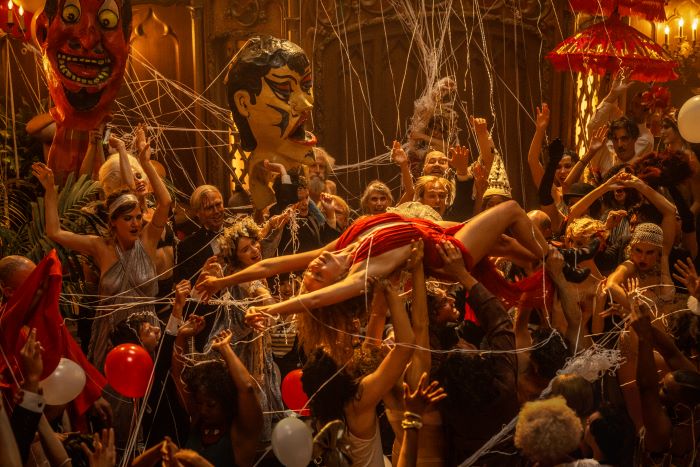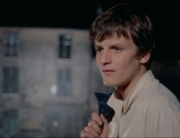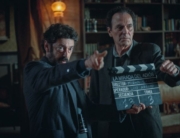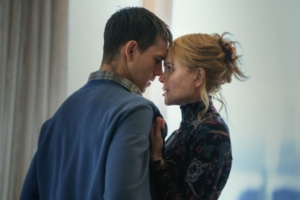Director Damien Chazelle has publicly stated that the impetus for his three-hour revisionist takedown of early Hollywood history was to counter what he described as its sanitized version. However, for Hollywood film buffs and devotees of TCM and the Criterion Channel, presumably the ideal audiences for Babylon, his mission may produce a shrug or puzzlement.
Those with a passing knowledge of silent film stars such as Olive Thomas, Edna Purviance, Wallace Reid, and Mabel Normand, to name several, already know that the early days of silent film and the star making machine were packed with substance abuse and behavior that wasn’t fit for print in family newspapers at the time (and maybe even today). The period is littered with scandals that have resulted in a mini-publishing industry, including Sidney D. Kirkpatrick’s A Cast of Killers, on the murder of William Desmond Taylor, and, yes, Kenneth Anger’s apocryphal Hollywood Babylon.
It’s as if this re-creation of 1920s Hollywood has been feverishly whipped up by a precocious 13-year-old boy with a dirty mind and a generous allowance. In the movie’s equivalent of a money shot, elephant dung shoots out directly into the camera—fortunately, this was not filmed in 3D. The rat-a-tat-tat editing will hold the attention of even the most sugar-loaded adolescent. Characters don’t just bump into each other, they collide with a resounding thump. Objects are slapped down onto a surface with a resounding force. You will not be bored, even when the story rambles on. The film forces you to pay attention.
The libertine world Chazelle first paints is that of a town newly sprung up from farmlands, where everyone is a bit player living out Joseph Moncure March’s poem The Wild Party. If viewers don’t know silent film history, they, like the onscreen naked or half-dressed revelers, can feel their way around—there is enough nudity and copulation going on in the opening party sequence to rival an HBO series. Its invitation might have promised: dildoes, drugs, and dames.
In a nod to the infamous Fatty Arbuckle scandal, an overweight actor enjoys a young starlet urinating on him in a bedroom upstairs (before one of them ends up dead), while hundreds of merrymakers downstairs have the most carefree New Year’s Eve celebration outside December 31. Speaking of stand-ins, Brad Pitt plays a dashing, older John Gilbert–esque matinee idol, Jack Conrad. Li Jun Lie portrays Lady Fay Zhu, a cross between Anna May Wong and screenwriter Francis Marion. When she is not playing exotic Asian archetypes, Lady Fay furnishes intertitles for B movies. A woman about town, she’s also the headline entertainer at the aforementioned bacchanal, singing the 1931 song by British songwriter Harry Roy “My Girl’s Pussy” in top hat and tails, a la a swaggering Marlene Dietrich in Morocco (a 1930 talkie, by the way). Ambiguous, this film isn’t.
And now for the headliner. Upon her first on screen entrance, the untamed Nellie LaRoy (a pitch-perfect stage name) crashes her car (which she stole) into a statue, and from here on out viewers need to batten down the hatches. Nellie (Margot Robbie) takes no prisoners: crashing the party, snorting mounds of cocaine, and becoming the scantily clad queen of the dance floor. Nellie represents, according to the director, a composite of real-life starlets: her cartoonish crudeness exaggeratedly mostly drawn from the hard-knock life of Clara Bow and her ferocious ambition borrowed from Joan Crawford. But for all the filmmakers’ attempts to create a 1920s time capsule, Nellie looks like a traveler from another era. With her messy, permed 1980s mane, it’s difficult not to imagine Nellie as a late-1970s supermodel stumbling out of Studio 54 at 4 am. Yet there’s one aspect the movie gets right: Women were prominently calling the shots as screenwriters and directors, more so than in any of the following decades of the 20th century.
For all its devotion to tweaking Hollywood history, at its heart the script is quite old-fashioned. When she finally lands a big break, a strung-out Nellie steps in front of a camera for the first time and becomes a natural—sans rehearsal—with the special ability to cry on cue. A knight in a blinding white undershirt, Manny Torres (Diego Calva), is the Zelig of the story; he’s at the right place and the right moment as the movies transition to sound, working his way up the corporate ladder.
With physical gusto, Robbie attacks her role, coming across as a dynamo, a bulldozer. However, viewers may wonder if there is ever a moment when Nellie is not high. Although there are a few moments to soften or at least explain Nellie’s turbulent family history, she could wear down any viewer. A sequence where she, now a movie star, undergoes a makeover to impress the sophisticated country club set falls flat. She barely makes an attempt to fit in, so suspense of her possible social success, or failure, drifts away. In keeping with ongoing grotesquerie, the amateurish My Fair Lady imitation ends with voracious vomiting.
The time period readily brings to mind 1952’s Singin’ in the Rain, set during Hollywood’s bumpy transition from silent to sound film, and Chazelle embraces the comparison by paying tribute to that classic in the epilogue, which acknowledges the magnetism of the movie musical, which might not have existed if Al Jolson had never promised “You ain’t seen nothing yet” in the 1927 semi-talkie The Jazz Singer.
Chazelle also reenacts a similar comedic scenario from Singin’ in the Rain: the awkwardness of early talkies filmmaking, when Nellie makes her talkie debut. Take after take, one problem will emerge and then submerge before another one rears its head. Yet, this is a comedy of a different sort, unlike the Stanley Donen directed film, with Jean Hagen as a hapless movie star providing the laughs. Here, the high-pitched, frenetic tension builds, perhaps climaxing when the assistant director explodes, hysterically threatening a coworker to do his job perfectly or else, “I will shit in your mouth.”
Even after shooting his wad in the beginning, so to speak, Chazelle can’t resist taking as many deep dives into Tinseltown’s underground nightlife. The many tangents into sensationalism are the main reason for the extra-long running time. His film is like someone on coke who doesn’t know when to quit.

















Leave A Comment